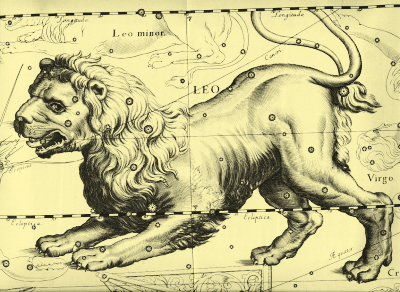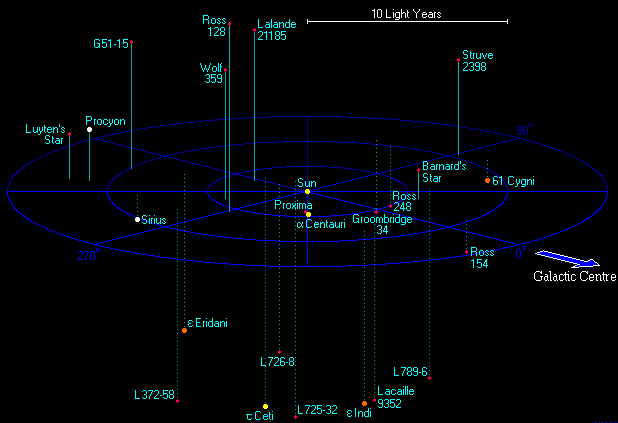|
OGLE-TR-182
__NOTOC__ OGLE-TR-182 is a dim magnitude 17 star far off in the constellation Carina at a distance of approximately 12,700 light years. Planetary system This star is home to the transiting extrasolar planet OGLE-TR-182b discovered in October 2007. See also * List of extrasolar planets * Optical Gravitational Lensing Experiment The Optical Gravitational Lensing Experiment (OGLE) is a Polish astronomical project based at the University of Warsaw that runs a long-term variability sky survey (1992–present). The main goals are the detection and classification of variable ... OGLE References External links * G-type main-sequence stars Planetary transit variables Carina (constellation) Planetary systems with one confirmed planet {{main-star-stub ... [...More Info...] [...Related Items...] OR: [Wikipedia] [Google] [Baidu] |
OGLE-TR-182 B
OGLE-TR-182b is a transiting extrasolar planet. It is a hot Jupiter with a similar mass to Jupiter but a larger radius. See also * Optical Gravitational Lensing Experiment The Optical Gravitational Lensing Experiment (OGLE) is a Polish astronomical project based at the University of Warsaw that runs a long-term variability sky survey (1992–present). The main goals are the detection and classification of variable ... OGLE References External links * Hot Jupiters Transiting exoplanets Exoplanets discovered in 2007 Giant planets Carina (constellation) {{extrasolar-planet-stub ... [...More Info...] [...Related Items...] OR: [Wikipedia] [Google] [Baidu] |
Optical Gravitational Lensing Experiment
The Optical Gravitational Lensing Experiment (OGLE) is a Polish astronomical project based at the University of Warsaw that runs a long-term variability sky survey (1992–present). The main goals are the detection and classification of variable stars ( pulsating and eclipsing), discovery of microlensing events, dwarf novae, and studies of the structure of the Galaxy and the Magellanic Clouds. Since the project began in 1992, it has discovered a multitude of extrasolar planets, together with the first planet discovered using the transit method ( OGLE-TR-56b) and gravitational microlensing. The project has been led by professor Andrzej Udalski since its inception. Description The main targets of the experiment are the Magellanic Clouds and the Galactic Bulge, because of the large number of intervening stars that can be used for microlensing during a stellar transit. Most of the observations have been made at the Las Campanas Observatory in Chile. Cooperating institutions i ... [...More Info...] [...Related Items...] OR: [Wikipedia] [Google] [Baidu] |
Carina (constellation)
Carina ( ) is a constellation in the southern sky. Its name is Latin for the keel of a ship, and it was the southern foundation of the larger constellation of Argo Navis (the ship ''Argo'') until it was divided into three pieces, the other two being Puppis (the poop deck), and Vela (the sails of the ship). History and mythology Carina was once a part of Argo Navis, the great ship of Jason and the Argonauts who searched for the Golden Fleece. The constellation of Argo was introduced in ancient Greece. However, due to the massive size of Argo Navis and the sheer number of stars that required separate designation, Nicolas-Louis de Lacaille divided Argo into three sections in 1763, including Carina (the hull or keel). In the 19th century, these three became established as separate constellations, and were formally included in the list of 88 modern IAU constellations in 1930. Lacaille kept a single set of Greek letters for the whole of Argo, and separate sets of Latin letter desi ... [...More Info...] [...Related Items...] OR: [Wikipedia] [Google] [Baidu] |
2MASS
The Two Micron All-Sky Survey, or 2MASS, was an astronomical survey of the whole sky in infrared light. It took place between 1997 and 2001, in two different locations: at the U.S. Fred Lawrence Whipple Observatory on Mount Hopkins, Arizona, and at the Cerro Tololo Inter-American Observatory in Chile, each using a 1.3-meter telescope for the Northern and Southern Hemisphere, respectively. It was conducted in the short-wavelength infrared at three distinct frequency bands ( J, H, and K) near 2 micrometres, from which the photometric survey with its HgCdTe detectors derives its name. 2MASS produced an astronomical catalog with over 300 million observed objects, including minor planets of the Solar System, brown dwarfs, low-mass stars, nebulae, star clusters and galaxies. In addition, 1 million objects were cataloged in the ''2MASS Extended Source Catalog'' (''2MASX''). The cataloged objects are designated with a "2MASS" and "2MASX"-prefix respectively. Catalog The ... [...More Info...] [...Related Items...] OR: [Wikipedia] [Google] [Baidu] |
Apparent Magnitude
Apparent magnitude () is a measure of the brightness of a star or other astronomical object observed from Earth. An object's apparent magnitude depends on its intrinsic luminosity, its distance from Earth, and any extinction of the object's light caused by interstellar dust along the line of sight to the observer. The word ''magnitude'' in astronomy, unless stated otherwise, usually refers to a celestial object's apparent magnitude. The magnitude scale dates back to the ancient Roman astronomer Claudius Ptolemy, whose star catalog listed stars from 1st magnitude (brightest) to 6th magnitude (dimmest). The modern scale was mathematically defined in a way to closely match this historical system. The scale is reverse logarithmic: the brighter an object is, the lower its magnitude number. A difference of 1.0 in magnitude corresponds to a brightness ratio of \sqrt /math>, or about 2.512. For example, a star of magnitude 2.0 is 2.512 times as bright as a star of magnitude 3.0 ... [...More Info...] [...Related Items...] OR: [Wikipedia] [Google] [Baidu] |
Star
A star is an astronomical object comprising a luminous spheroid of plasma held together by its gravity. The nearest star to Earth is the Sun. Many other stars are visible to the naked eye at night, but their immense distances from Earth make them appear as fixed points of light. The most prominent stars have been categorised into constellations and asterisms, and many of the brightest stars have proper names. Astronomers have assembled star catalogues that identify the known stars and provide standardized stellar designations. The observable universe contains an estimated to stars. Only about 4,000 of these stars are visible to the naked eye, all within the Milky Way galaxy. A star's life begins with the gravitational collapse of a gaseous nebula of material composed primarily of hydrogen, along with helium and trace amounts of heavier elements. Its total mass is the main factor determining its evolution and eventual fate. A star shines for most of its active life due t ... [...More Info...] [...Related Items...] OR: [Wikipedia] [Google] [Baidu] |
Constellation
A constellation is an area on the celestial sphere in which a group of visible stars forms a perceived pattern or outline, typically representing an animal, mythological subject, or inanimate object. The origins of the earliest constellations likely go back to prehistory. People used them to relate stories of their beliefs, experiences, creation, or mythology. Different cultures and countries adopted their own constellations, some of which lasted into the early 20th century before today's constellations were internationally recognized. The recognition of constellations has changed significantly over time. Many changed in size or shape. Some became popular, only to drop into obscurity. Some were limited to a single culture or nation. The 48 traditional Western constellations are Greek. They are given in Aratus' work ''Phenomena'' and Ptolemy's ''Almagest'', though their origin probably predates these works by several centuries. Constellations in the far southern sky were ... [...More Info...] [...Related Items...] OR: [Wikipedia] [Google] [Baidu] |
Stellar Distance
The cosmic distance ladder (also known as the extragalactic distance scale) is the succession of methods by which astronomers determine the distances to celestial objects. A ''direct'' distance measurement of an astronomical object is possible only for those objects that are "close enough" (within about a thousand parsecs) to Earth. The techniques for determining distances to more distant objects are all based on various measured correlations between methods that work at close distances and methods that work at larger distances. Several methods rely on a standard candle, which is an astronomical object that has a known luminosity. The ladder analogy arises because no single technique can measure distances at all ranges encountered in astronomy. Instead, one method can be used to measure nearby distances, a second can be used to measure nearby to intermediate distances, and so on. Each rung of the ladder provides information that can be used to determine the distances at the next ... [...More Info...] [...Related Items...] OR: [Wikipedia] [Google] [Baidu] |
Light Year
A light-year, alternatively spelled light year, is a large unit of length used to express astronomical distances and is equivalent to about 9.46 trillion kilometers (), or 5.88 trillion miles ().One trillion here is taken to be 1012 (one million million, or billion in long scale). As defined by the International Astronomical Union (IAU), a light-year is the distance that light travels in a vacuum in one Julian year (365.25 days). Because it includes the time-measurement word "year", the term ''light-year'' is sometimes misinterpreted as a unit of time. The ''light-year'' is most often used when expressing distances to stars and other distances on a galactic scale, especially in non-specialist contexts and popular science publications. The unit most commonly used in professional astronomy is the parsec (symbol: pc, about 3.26 light-years) which derives from astrometry; it is the distance at which one astronomical unit subtends an angle of one second of arc. Defi ... [...More Info...] [...Related Items...] OR: [Wikipedia] [Google] [Baidu] |
Centre De Données Astronomiques De Strasbourg
Center or centre may refer to: Mathematics *Center (geometry), the middle of an object * Center (algebra), used in various contexts ** Center (group theory) ** Center (ring theory) * Graph center, the set of all vertices of minimum eccentricity Places United States * Centre, Alabama * Center, Colorado * Center, Georgia * Center, Indiana * Center, Jay County, Indiana * Center, Warrick County, Indiana * Center, Kentucky * Center, Missouri * Center, Nebraska * Center, North Dakota * Centre County, Pennsylvania * Center, Portland, Oregon * Center, Texas * Center, Washington * Center, Outagamie County, Wisconsin * Center, Rock County, Wisconsin **Center (community), Wisconsin *Center Township (other) *Centre Township (other) *Centre Avenue (other) *Center Hill (other) Other countries * Centre region, Hainaut, Belgium * Centre Region, Burkina Faso * Centre Region (Cameroon) * Centre-Val de Loire, formerly Centre, France * Centre (de ... [...More Info...] [...Related Items...] OR: [Wikipedia] [Google] [Baidu] |
Astronomical Transit
In astronomy, a transit (or astronomical transit) is a phenomenon when a celestial body passes directly between a larger body and the observer. As viewed from a particular vantage point, the transiting body appears to move across the face of the larger body, covering a small portion of it. The word "transit" refers to cases where the nearer object appears smaller than the more distant object. Cases where the nearer object appears larger and completely hides the more distant object are known as ''occultations''. However, the probability of seeing a transiting planet is low because it is dependent on the alignment of the three objects in a nearly perfectly straight line. Many parameters of a planet and its parent star can be determined based on the transit. In the Solar System One example of a transit involves the motion of a planet between a terrestrial observer and the Sun. This can happen only with inferior planets, namely Mercury and Venus (see transit of Mercury ... [...More Info...] [...Related Items...] OR: [Wikipedia] [Google] [Baidu] |







